
During a recent interview with Bhekisisa, Groote Schuur Hospital CEO Dr Shaheem de Vries suggested that the hospital itself would be the more interesting subject, and that we should come back and speak to a spectrum of staff, from porters to medical managers. We did not need a second invitation. Writer Sean Christie and photographer Jay Caboz spent several days roaming around the hospital complex, enjoying a rare level of access.
Place of ambiguity
We meet outside the neoclassical facade of the old hospital, now known as Old Main Building. Wind shakes the heads of the forecourt palms, and a procession of caps, headwraps, hijabs and bucket hats go by. In a corner of a parking area, smokers stare at their feet. Nearby, outside the “new” Main Hospital, a few patched and bandaged patients sunbathe in wind shadows. A statue of Hygeia, daughter of Asclepius, the god of medicine, looks down on all.We head in, clear security and almost immediately become lost, ending up in the Heart of Cape Town Museum, which celebrates the first human-to-human heart transplant, performed right here by Christiaan Barnard.
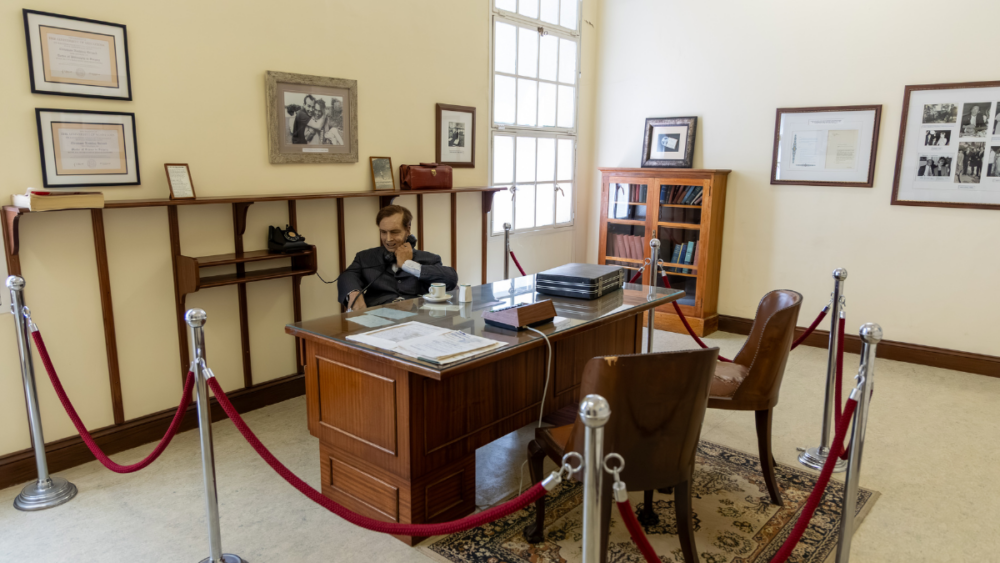
The museum is closed and deserted, and it feels uncomfortably voyeuristic to be amongst the medical wax figurines, going about their groundbreaking work. There is even an intubated dog in one of the displays (in preparing for the operation, the team had experimentally transplanted 48 hearts into dogs). Barnard, incidentally, was proposed for the Nobel Prize in medicine and physiology in 1968, but it was another brilliant Groote Schuur-based mind, Alan M. Cormack, who was awarded the prize in 1979 (jointly with Godfrey N. Hounsfield) for his work in developing the CT [computer tomography] scanner, which allowed a detailed x-ray of the body.
Almost half a century later, Groote Schuur maintains an excellent reputation for cardiothoracic surgery and is still a fount of clinical world firsts. There is another narrative, however. A South African Human Rights Commission team visited the hospital earlier this year, noting infrastructure problems, vandalism and staffing shortages. In September, the hospital disclosed that its new and much-needed trauma centre is underfunded by tens of millions of rands.
Something the hospital CEO, Dr Shaheem de Vries, said comes back: “If you want to work in public healthcare in South Africa, it helps to get comfortable with ambiguity.”
How much ambiguity can one institution hold, though? We hope to learn more, but for now we need help.
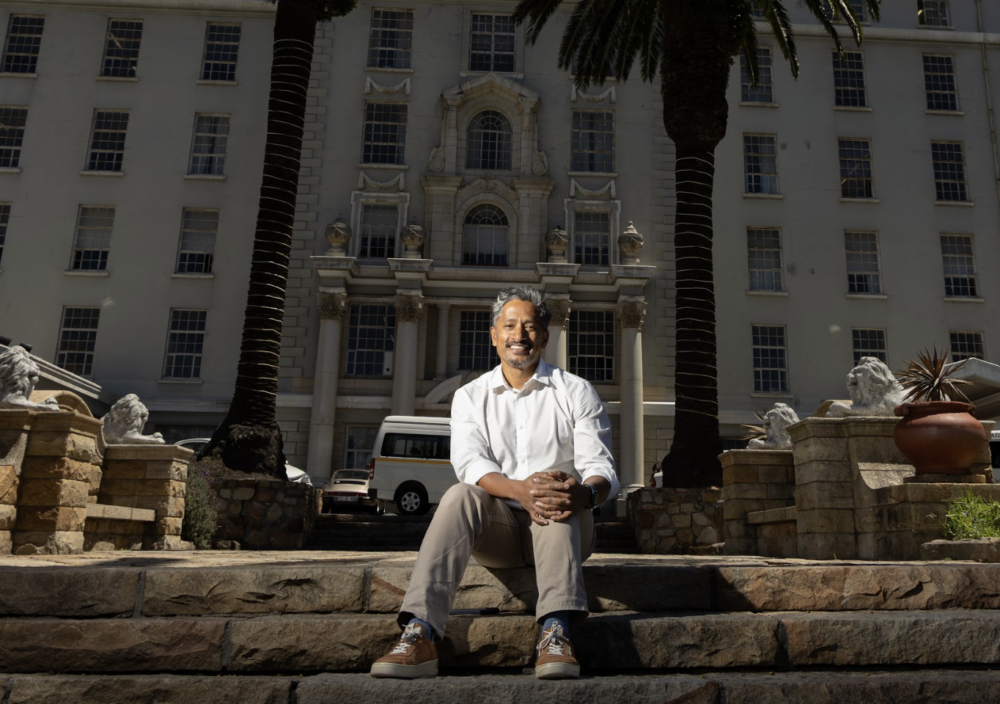
The engineer: ‘Greasy, sooty artisans keep this place going’
The thing with Denton Smith, the head of engineering, is you need to keep up. He knows the place like nobody else. It’s a big complex, and if you want him to show it to you, be prepared to move fast and take shortcuts: through tunnels, skybridges and hidden servitudes.
He marches us down an ascending passageway in Old Main Building (built on Table Mountain’s sharply sloping Mowbray Ridge), old Formica twinkling beneath his heels. He is short, stocky and sensibly dressed. His phone, which he holds in a hand missing a few fingertips, repeatedly emits a jaunty whistle.
“Engineers’ paper cuts,” he explains.
Exiting a door at the back, a gently smoking chimney rears up — a landmark that has inspired decades of misinformation (“It’s the flue of the crematorium” or “the old laundry”).
“False, it’s the exhaust on our boiler house,” Smith clarifies, leading us into a hangar-like structure in which several large boilers produce the steam that regulates temperature in the hospital. In the event of a power failure, an antiquated generator kicks in.

“It’s a 1934 Rolls Royce, nearly a century old and still doing the job,” says Smith, who in due course will lead us on to much newer installations: nuclear bunkers for radiation treatment and hybrid operating theatres kitted out with advanced imaging systems. All of it — the antique and the state-of-the-art — lies within his purview, and not just mechanisms but every system, every building.
“Look, you have to have a passion for it [hospital engineering],” he says.
For Smith, the bug bit when he was about three years old. His father was involved in hospital engineering, and he grew up in the backrooms of hospitals. After completing his national diploma, with a focus on electrical and mechanical engineering, Smith did his in-service training in the private sector. After stints at Karl Bremer and Tygerberg hospitals, he was given Groote Schuur’s medical gas department to run in 2006, and became the head of engineering in 2010. His vast portfolio is chronically underfunded, but Smith relishes problems.
“We’re approved for 157 staff but funded for about 76. It’s tight, but we make it work,” he says.
In 2012, Smith had his department recognised as an official training facility for the Technical and Vocational Education and Training (TVET) colleges. It means extra hands, at minimal cost.
We speed through various workshops. The experience is as much an olfactory one as anything else: smells of chipped wood, singed metal, grease and cooling clinker.
“Hospital engineering has always been in the background in South Africa, taken for granted and somewhat looked down upon because we’re grubby and sooty.”
Smith has substantiating stories aplenty: there’s the time a fire broke out in the hospital’s “umbilical”, which carries “all the main links: gasses and communications and such like”. And how about the 2019 Legionella outbreak in the hospital’s water systems, which the engineering team solved by placing hundreds of chlorine floaters in the hospital’s 54 storage tanks, becoming the first hospital in the world to completely eradicate Legionella bacteria, which causes Legionnaires’ disease, a severe form of pneumonia, and the flu-like Pontiac fever.

We arrive on Service Street, the main conduit for deliveries to, and retrievals from (rest in peace) the Main Hospital. It is also the hospital’s heart, powered by two 11 000-volt cables. Arterial pipelines for gas and air snake upwards.
“Between every single patient floor, there’s an interstitial floor that carries all the services, from sewer lines through to telecommunications. Most people think this is a 7-floor building, but in fact, we have 16 floors.”
One of those floors runs what’s known as Theatre Street: a long boulevard hung with sun-bleached wildlife photos from the 90s. At the far end, a green door in the main theatre suite opens on a small office.
“I leave you in capable hands,” says Smith.
Speciality nurse: ‘It’s not a fairy tal,e but it works’
Sister Janine Watson looks us up and smiles.
“Most people call me Nina, I’m very informal,” she says, and in the same breath directs us to the theatre change rooms, where we will find the scrubs we need to don before proceeding further.
“Down the hall 30 metres, left at the yellow sharps bin, through the door and all the way to the other side of the change room,” she says.
Watson cannot afford to be imprecise. Her official title is assistant nurse manager, speciality theatre (“Yeah, it’s a mouthful”), and she is directly responsible for about 160 personnel — indirectly for another 80 or so.
Her nurse mother ran a ward in Old Hospital for many years, and Watson attended the hospital creche. After completing what was then the R425 nursing diploma, Watson applied for work at Groote Schuur.
“I never wanted to work anywhere else,” she says.
“I was a cardiothoracic scrub sister for 19 years, and I ran the department for 14. I’d scrub in now if asked. When you’re in the flow, working with the same person again and again, it’s like a dance; nobody has to speak, the hands go out and find each other,” she says, ushering us into the hospital’s new-ish thoracic theatre, where a patient is receiving a lung transplant.
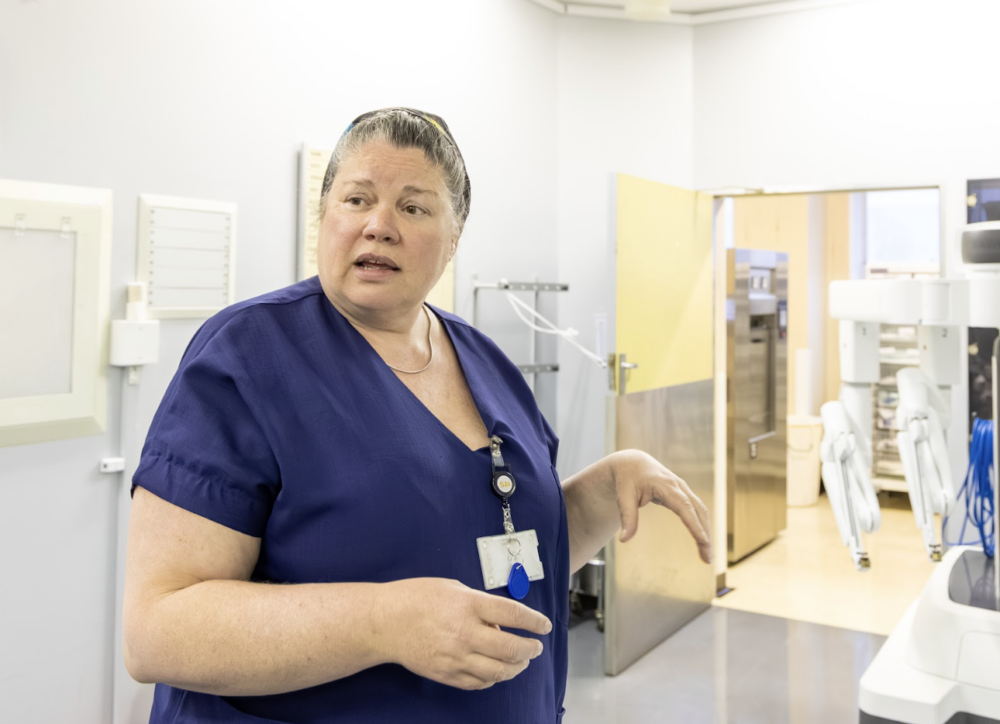
For the uninitiated, it’s a surreal scene: several men and women stand at all sides of a table, where a covered patient’s chest is open. One expects hushed voices, but everyone speaks normally. A tube pipe filled with blood runs into a machine (the ECMO — extra corporeal membrane oxygenation machine) under the watchful gaze of two perfusionists, before returning to the patient’s body a much brighter red.
“It oxygenates blood so that human lungs don’t have to. It has been a real game-changer,” says Watson.
In a nearby theatre squats a gleaming new four-armed surgery robot. Watson plays it cool. “It isn’t AI, it can’t operate on its own. It’s just a rather expensive pair of scissors,” she says, but not without pride.
In one sense, Watson is a walking advertorial for Groote Schuur, but in turn, she is unflinchingly honest about the hospital’s challenges.
“We’ve experienced waves of budgetary and staffing costs since the 1990s, most recently in 2023. It’s a major problem for patients and the healthcare system in the Western Cape,” she says.
Part of the problem, in her sphere at least, is structural.
“We just aren’t training enough nurses. Twenty-one percent of nurses on the SANC [South African Nursing Council] register are over the age of 60 years, a further 27% are over the age of 50. In the next 10 years we will only be able to train half of the people who will retire. It’s frightening,” says Watson, who has six specialty and fourteen general posts open at the moment.
Among her nurses, the spectre of burnout looms large.
“Most work Monday to Thursday, which is your 40-hour week, and then overtime on Friday, and sometimes a shift in one of our supportive public-private projects, which operate on Saturdays. We have strict caps on overtime, but everyone here works under immense pressure. We have nurses come in from as far away as Atlantis and Grabouw, meaning they leave home at half past four in the morning and get back at nine o’clock at night on public transport, in areas that are dangerous and all of that jazz.”
Watson maintains that Groote Schuur still offers a good service, however.
“If something was seriously wrong with me, like a car accident with multiple issues, I would rather come here than go private, because you have all the expertise on hand, and people are very dedicated. It’s not a fairy tale, but it works,” she says.
The manager: ‘Can we keep up with all the demands?’
Ten thousand to 12 000 people come and go from the hospital complex daily, everyone from patients to product reps. On the wide boulevards of the Main Hospital, almost everything that can happen on a street is happening: families confer, old friends catch up, taking care to avoid cleaners armed with industrial machines.
Medical manager Belinda Jacobs works at the heart of it all. She is petite, softly spoken and, by her own admission, a little fatigued.
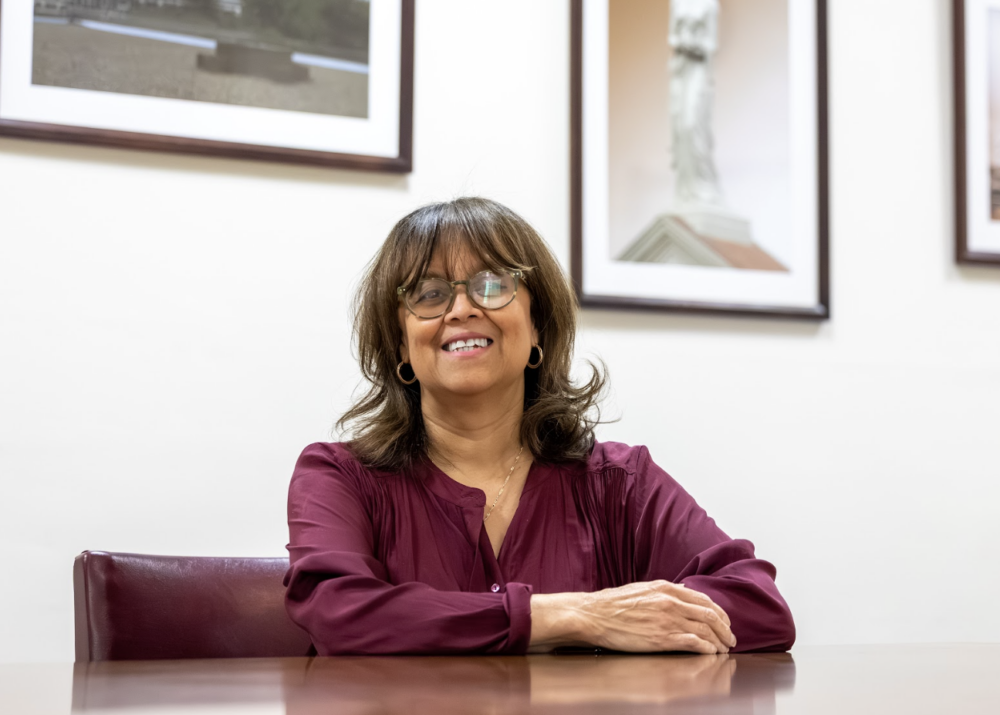
From staffing and material shortages to bullying and burnout, all of the hospital’s problems are ultimately the responsibility of its managers. Even excellence has to be managed.
“Don’t get me wrong, it’s inspiring to have these lifesaving technologies, but they bring their own challenges,” says Jacobs, who started in Groote Schuur as a medical officer in 2001.
“When we finally got our own MRI (which takes detailed images of the body) about 15 years ago, it was fantastic, we were so proud and excited, but today it is a seemingly insurmountable pressure point. We are now performing 800-900 MRIs per month, compared to the 50 per month we outsourced when I started. What medical science can do today is extraordinary, but we’re almost reaching the point where we have to ask ourselves, ‘Can we keep up with the demands?’”
Sharp growth in the city’s population, alongside a decline in the number of people who can afford medical aid, and a budget which is not matched with the needs, has led to a situation, says Jacobs, “where we have to do more with less”.
“Capetonians regard Groote Schuur Hospital as their hospital, and do not always adhere to the strict referral guidelines that are in place. This creates added pressure as the hospital responds to ever-increasing needs and still strives to maintain patient safety and dignity. However, it remains our responsibility to advocate for what is needed,” she says.
Painful decisions are taken every day, and there are services, like renal dialysis, where access is very strictly controlled.
“It can be enormously difficult to tell patients, ‘Sorry, we can’t get you the resource that you need to continue living.’ We are more aware today of the moral injury that is done to our staff in such cases. There’s a much greater focus on staff health and wellness,” she says.
Jacobs offers to walk us to the main entrance to the domain of porters, the first hospital cadre that many patients and their families interact with.
Porters: Heavy lifting, soft touch
The role of the porter is to get the patient safely from point A to point B, in a wheelchair, stretcher or bed. That’s the gist of it, says Sibusiso Sonjica, although he insists “a lot more goes into it than you might think.”
“You need to be able to handle a patient, both physically and in other ways. We do log rolling. If there has been a spinal injury, we do Patsliding.”
Alongside changes in technology, perhaps the biggest change in recent years is the rise in gunshot wounds, mainly due to gangsterism. Sonjica says the people who come in are often angry and panicking, “and sometimes they are followed by another group that wants to retaliate.”
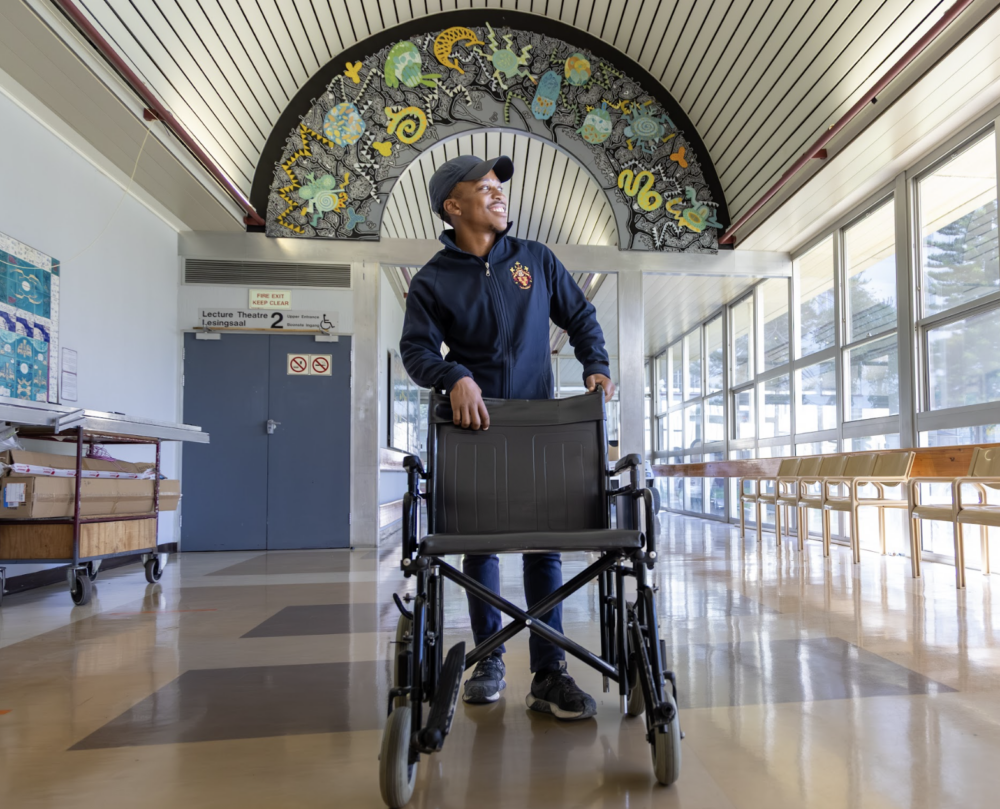
Sonjica was on duty one night when a patient came in with a bullet lodged in his pelvis.
“He wasn’t code red, and since the specialist was delayed, the nurses told him to wait. He started skelling them, so I started speaking to him in a language you aren’t taught at school, this tsotsi-taal. “My bru, moenie so maak,” and so on, and it calmed him. Sometimes you find yourself in situations you are not taught to handle, but the instincts kick in, and you use the information that’s in you, maybe cultural, street-wise or professional.”
The need for intuitive humanity was at its highest during the Covid-19 pandemic.
“Family members couldn’t visit patients, and some, especially these traditional uncles, didn’t want to hear anything in English, so the doctor would say, ‘Please can you explain’,” Sonjica recalls, adding, “Porters had to be jacks of all trades: halfway porter, halfway counsellor and translator.”
Next to patients, the personalities that porters most often interact with and must navigate are those of nurses.
“There are those nurses who look down on porters,” Sonjica says, although he is quick to add that he has noticed some positive changes.
“We now have quarterly meetings for all staff, and the idea is to try and break down the hospital’s hierarchy. It is starting to have an impact. At the end of the day, if our colleagues are not happy, the patients are not going to be happy.”
Sonjica, who trained as a baker, feels he was called to hospital work in a dream.
“The satisfying thing about it is when you see a sick patient looking so depressed, and you come in with a positive mindset, like ‘Hey, my guy, no worries, you’ll be fine. Give it a week or two weeks, your eyes are gonna turn white. You gonna eat nice, and when you’re discharged, we’re gonna eat meat in the location.’ And you might laugh about that, but it has happened,” says Sonjica, who was performing with his choir in a popular mall when a voice rang out.
“Porter! he shouted, Porter!” Nobody calls me that, so I knew it was a patient. Afterwards, he hugged me and said, ‘I appreciate it,’ even though I didn’t give him any injection, only positive vibes. It instilled hope, and boom, he’s like me now, not a patient but a regular person.”
Cleaner: From mopping to metrics
To get to the finance department, we need Smith’s help again.
He leads us underground, into passageways stacked with discarded beds, autoclaves, computers and fax machines. In one subterranean room, there is even an old fibreglass Father Christmas, banished, Smith maintains, because a patient complained about the predatory twinkle in its eyes.
He leaves us outside room 45, a nondescript door in a nondescript passageway, at the back of the building. It is lunchtime, and save for one person sitting at her desk, the office is deserted.
Waving, Nicole Mckay-Sias says, “You’re welcome.”
There are 18 job levels or salary grades in government service, and Mckay-Sias is proudly level five, her official title: fees administration clerk. She started working in Groote Schuur outside of this frame, however, as an agency-employed cleaner. To get a foot in the door of government service, she applied for a posting in a part of the city that is notorious for gang violence. She stuck it out for six months and saw some things she would rather forget.
“In a place like that there is no growth, only survival. But you learn to wake up each morning and put on your armour, and just do what you have to do to get through the day,” she says.
Mckay-Sias returned to Groote Schuur as a household aide (level 2), working the cardiothoracic ward.
“There I learned that every person in a ward can contribute to healing. I was friendly. I was diligent and helpful, and the patients used to ask for me by name. They’d say, ‘Where is Nicky?’ — that’s what they called me. When the nurses saw that I was adding value to their patients’ lives they said I shouldn’t be a cleaner my whole life, that I could do more.”
When the country was in Covid lockdown, Mckay-Sias put her hand up for service.
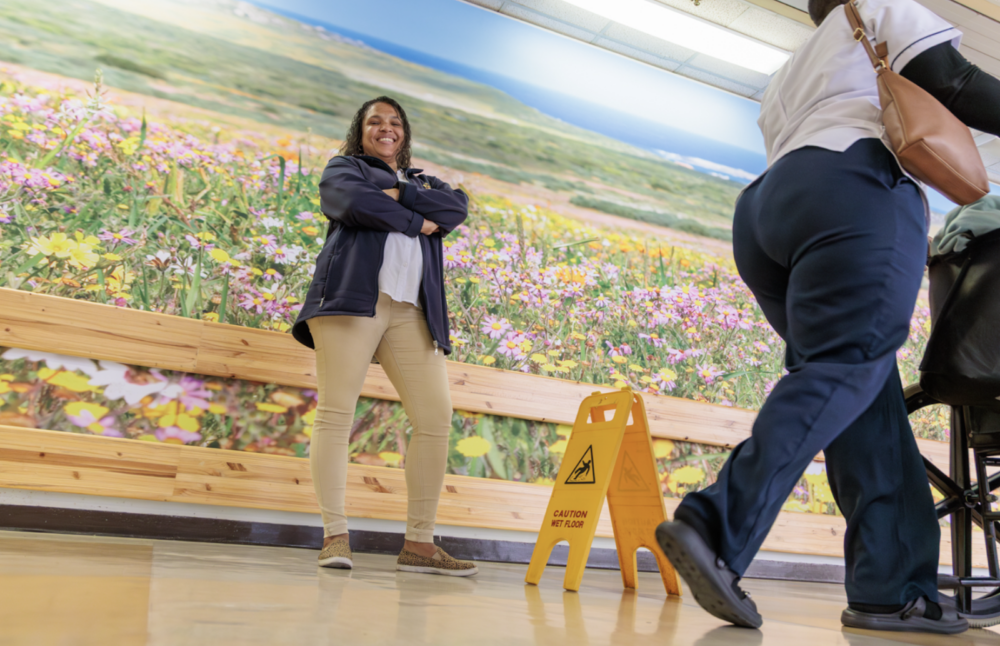
“I remember it was raining when the first wave started. It was just me and another girl working in the ward, because nobody else wanted to. We worked overtime a lot, but it paid off at the end of the day because a lot of patients thanked us for our help and our sincerity and compassion towards them.”
Life in the wards as a cleaner was not always pleasant, however.
“Most people are familiar with the concept of structure and hierarchy, and they see the doctor as someone important. People can be less polite with nurses, and when the nurses don’t take their nonsense, they take it out on the cleaners,” she says, admitting she used to be quick to anger, but learned patience through caring for a sick relative.
In 2023 Mckay-Sias went on “experiential learning”, an in-house programme of exposure to different roles within the hospital.
“I did six months in finance. I didn’t know anything about a computer, but the staff in that department were so helpful, and now I can do it with my eyes closed,” she says.
She applied successfully for her current role that same year.
Part of the job is collecting outstanding revenue, and Mckay-Sias says it can be “quite sad actually, because people are suffering economically, especially since Covid-19.”
“Sometimes families can’t settle the account when their loved one passes away. Sometimes they don’t even have money to go to the Master’s office (master of the High Court) to get that one form they need just for the account to be written off. I try to help everyone but it isn’t always possible,” she says.
Mckay-Sias feels she has more to offer the hospital, and more to prove to herself.
“I came here with just a matric but I’m still learning every day, in a good way. Work with your team, not against them. Don’t be afraid to ask for help. Don’t be afraid to admit you’ve made a mistake. These are some of the things I’ve learned.”

This story was produced by the Bhekisisa Centre for Health Journalism. Sign up for the newsletter.
From porters to engineers, hospital staff navigate chronic underfunding and staffing shortages while maintaining world-class care at one of South Africa’s most storied medical institutions




